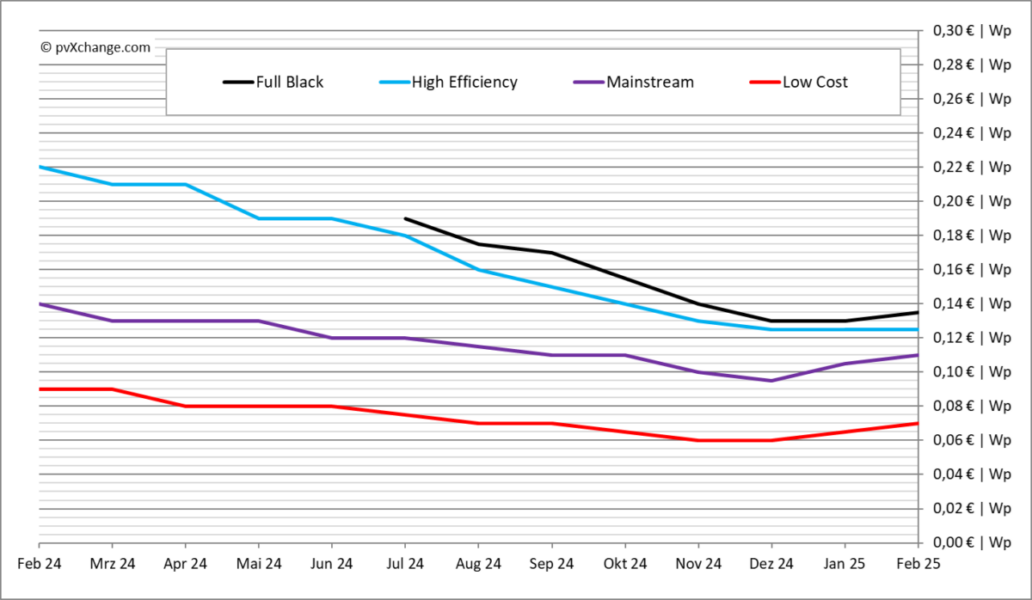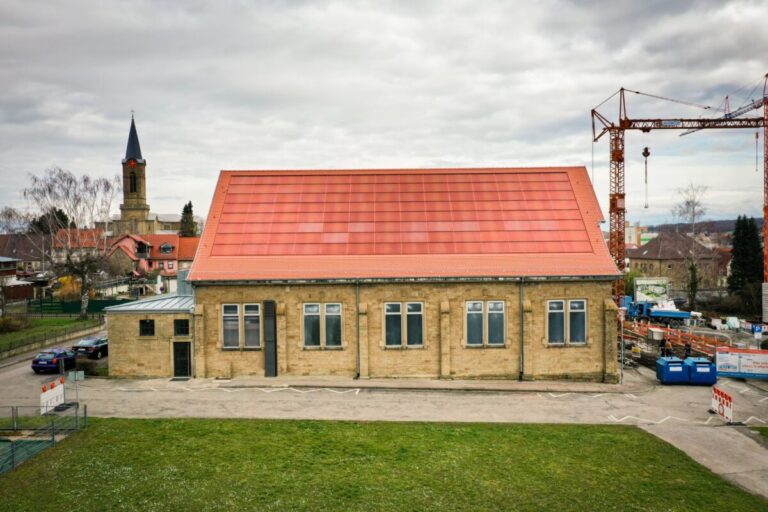Inspired by the 3D photonic structures on the glittering blue wings of a Morpho butterfly, scientists from the Fraunhofer Institute for Solar Energy Systems of Germany have developed colored solar panels that can be absorbed practically invisibly in the outside of a building while being incorporated invisible , while retaining a lot of efficiency.
The market for a seamless integration of PV seems to be in buildings, especially in the energetic renovation of historic buildings. A recent study showed that when PV modules are colored to match the roof or the facade of an existing building, social acceptance increases. But standing out of the balance between aesthetics and energy yield has yielded a challenge for solar researchers so far: solar modules for building-integrated applications must optically behave as a traditional colored element and yet generates as much strength as possible.
Inspired by the 3D photonic structures on the glittering blue wings of a Morpho butterfly, scientists from the Fraunhofer Institute for Solar Energy Systems of Germany have developed colored solar panels that can be absorbed practically invisibly in the outside of a building while being incorporated invisible , while retaining a lot of efficiency.
In 2024, the Institute of Psychology at the University of Freiburg, Germany and the neighboring Fraunhofer Institute for Solar Energy Systems ISEe carried out a joint investigation into the social acceptance of buildings-integrated photovoltaic photo (BIPV). The conclusions showed that the acceptance of integrated photovoltaisies in urban areas is generally very high and that PV is viewed more positively in modern buildings than on historic buildings.
However, the study also showed that when PV modules are colored to match the roof or facade of the building, so that they are practically invisible, social acceptance is increased to the point where no difference is detected between the different building types. “An important finding of the study is that the social acceptance of PV systems depends on the type of construction and visual impression. These two factors weigh much heavier than personal variables such as personal values, political attitudes or environmental problems, ”the authors of the study summarized.
Market expectations for building-integrated PV
Nowadays, 75% of the installed PV in Germany is on buildings. The market for photovoltaïschens on buildings is growing continuously and has a great potential. About 400 GW installed PV capacity is required by 2045 for the energy transition in Germany to succeed. With a technical potential of approximately 1,000 GW, Fotovoltaïschens on buildings can make an important contribution to the low -carbon of the construction sector and the built infrastructure – without taking extra land surfaces.
This “double use” of already sealed surfaces appeals to urban areas all over the world and can be generated in cheap electricity where it is needed. However, solar panels sometimes cannot look into place when they are installed on roofs and facades, especially in the historic centers of cities. The study of the social acceptance of BIPV can conclude that it is more logical for existing buildings to select colored PV modules that merge homogeneous in the appearance of the building instead of using PV as an architectural detail. That is why it is important for the PV industry to offer a wide range of aesthetically different PV modules that match the various existing buildings.
Color inspired by a butterfly
The bottleneck for colored BIPV products has been their lack of efficiency. Simple painting of the cover glass of a PV module results in the color pigments that block the sun and prevent the solar cells from reaching. To prevent this, the Fraunhofer Isee research team looked at nature for inspiration and found it in the Morpho Butterfly. The 3D photonic structures on the wings of the butterfly ensure an intensive, angular stable colored impression thanks to a fundamental low-loss interference effect. According to this biological model, the scientists managed to use a vacuum process to apply a similar surface structure on the back of the glass that covers their solar panels. Depending on the fine structure, glass coverings can be produced in a wide variety of colors and also colored films.
The coat system developed for colored solar panels has now surpassed the biological model in terms of its properties. Independent measurements confirm that colored solar panels with structural instead of painted coatings can achieve approximately 95% of the capacity of a comparable non -coat panel. The plug-in solution can be used with all standard commercially available solar technologies and that can be provided in the future, plus this can be made industrially at low costs. Cell and panel technologies such as rear contact solar cells with a uniform appearance are particularly good fit.
If you want to read the study, visit This website.
Author: Thomas Kroyer
This article is part of a series that is contributed by RD20, a worldwide initiative of leading research institutes of the G20 countries and regions with the aim of strengthening international cooperation in R&D and promoting innovation towards a carbon-neutral society. Articles under this column are contributed by individual RD20 member institutes and are the only characteristic of the designated author (s).
For more information: https://rd20.aist.go.jp/
The views and opinions expressed in this article are the author, and do not necessarily reflect it by PV -Magazine.
This content is protected by copyright and may not be reused. If you want to work with us and reuse part of our content, please contact: editors@pv-magazine.com.
Popular content




